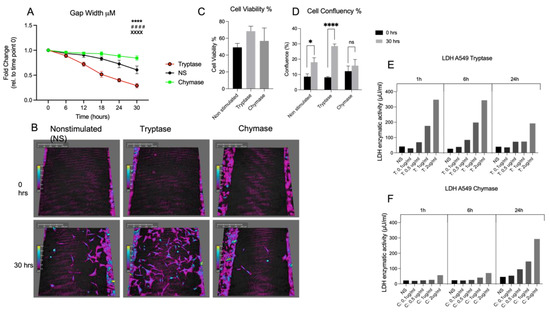Customer Publication

Mast Cell Proteases Promote Diverse Effects on the Plasminogen Activation System and Wound Healing in A549 Alveolar Epithelial Cells
Journal: Cells (2022)
Institution: Lund University
Research Areas: Cell research
Cell Lines: A549 (Alveolar basal epithelial cells)
Summary: Tissue damage, epithelial alterations, and intraepithelial presence of mast cells (MCs) are characteristics of asthma pathogenesis. Increased alveolar infiltration of MC populations has also been identified as a feature of asthma and other chronic respiratory diseases. The asthma-associated receptor, urokinase plasminogen activator receptor (uPAR), has been shown to regulate bronchial epithelial repair responses. The paper studied the impact of MC tryptase and chymase on functional properties and expression of uPAR in alveolar epithelial cells. Authors found that tryptase improved wound healing capacity, cellular migration and membrane-bound uPAR expression. Chymase reduced gap closure capacity, cellular migration and membrane-bound uPAR expression but increased soluble uPAR release. The data suggest a dual regulatory response from the MC proteases in events related to uPAR expression and wound healing which could be important features in asthmatic disease.HoloMonitor M4 wound healing assay, and cell motility assay was used to study the alveolar epithelial cell migration and wound healing post-stimulation with tryptase or chymase.